
 |
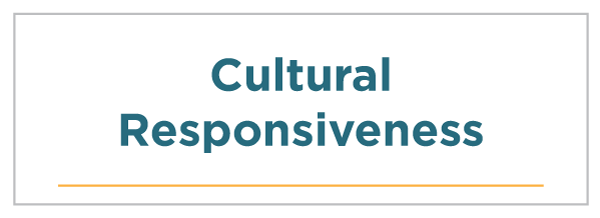 |
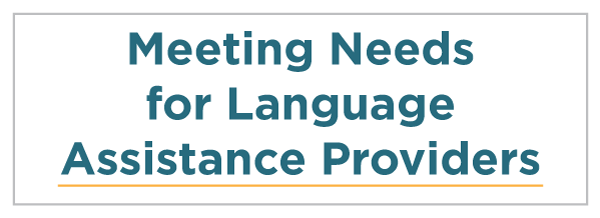 |
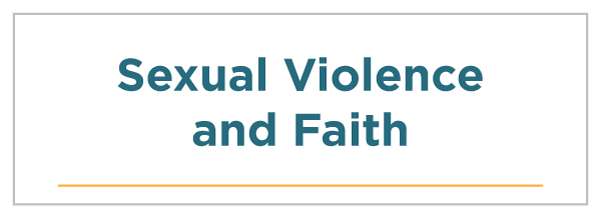 |
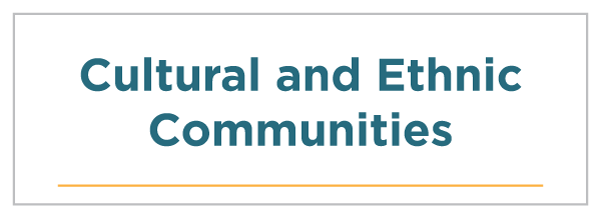 |
 |
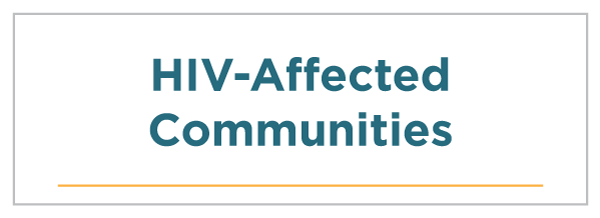 |
 |
 |
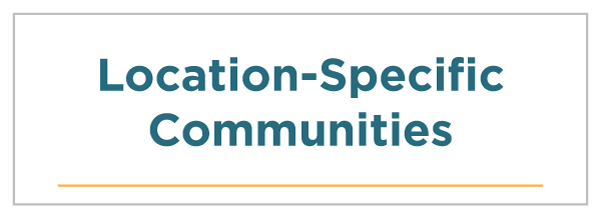 |
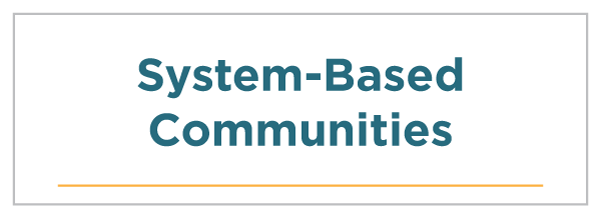 |
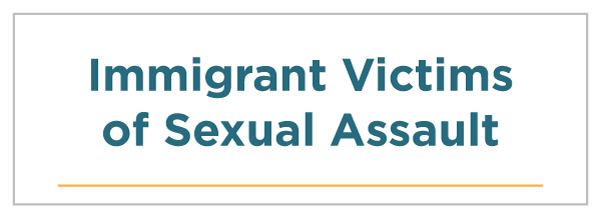 |
Most people will experience a disability at some point in their lives. The disability could be —
Each SART member should be aware of their individual and organizational requirements to serve individuals with disabilities under federal, state, or tribal laws. For example, federal law requires law enforcement to make reasonable modifications to policies, practices, and procedures, and to accommodate crime victims who have a disability, as needed, under most circumstances. [148]
Sexual assault against people with disabilities happens across the lifespan, and individuals with disabilities experience higher rates of sexual assault than the general population. [149]
Recent DOJ data shows that between 2010 and 2014, the rate of sexual assault against people with disabilities was three times that of people without disabilities. [150]
Among people with disabilities, 25.6 percent of women and 8.8 percent of men reported some form of lifetime sexual victimization, compared to 14.7 percent of women and 6.0 percent of men without disabilities. [151]
Given the greater likelihood that individuals with disabilities will experience sexual assault, it is important for SARTs to proactively develop responses that support victims with disabilities, from disclosure to prosecution. SARTs have a responsibility to offer programs and services that are barrier-free and adaptive.
During protocol development, SARTs can determine what tools and services need to be available, which community partners can be engaged, and what training is needed to support individuals with disabilities. Service providers who are likely to hear disclosures should be trained to adapt to the victim’s style of communication to maximize understanding and respect.
There is also a need for training on investigation and prosecution of sexual assault committed against individuals with disabilities. SARTs can take the lead in making trainings available.
While it is unclear if individuals who offend specifically seek out individuals with disabilities, many individuals with disabilities experience additional risk factors such as relying on caregivers for routine, and often intimate, personal care.
People with intellectual disabilities or physical disabilities may be limited in their ability to communicate or may be socially isolated due to their disability or how the disability is perceived by others. Their risk is further compounded by the reluctance of others to believe those who have or are perceived to have cognitive limitations.
In addition to being at greater risk of sexual exploitation, people with disabilities may be subject to violence directly related to their disability such as destruction of assistive devices, inappropriate administration of medications, and inappropriate handling of personal care. [155]
While every person is vulnerable to becoming a victim, a number of factors create an increased risk for individuals with disabilities. Victims with disabilities also experience greater barriers to reporting. Consider the circumstances below:
SARTs can bolster outreach and enhance services to better meet victims’ physical, sensory, and mental needs by expanding partnerships, evaluating agency accessibility, and promoting culturally relevant responses for individuals with disabilities. This section of the SART Toolkit will help SARTs identify areas for improvement in working with victims who have disabilities.
SARTs have a responsibility to learn about individuals with disabilities as a population vulnerable to sexual assault. Often, individuals with disabilities experience multiple forms of discrimination related to employment and housing, which also increase their vulnerability to a variety of crimes.
The Americans with Disabilities Act (ADA) (42 U.S.C. 12101 et seq.) describes a person with a disability as a person who —
The ADA’s regulations do not specify all conditions that may meet this definition; it is impossible to identify every disability that could potentially be covered under the regulation.
Disability transcends age, race, ethnicity, sexual orientation, class, religion, and gender. Not only are there differences in the type and severity of disabilities, but there are also differences in disabilities based on the age of onset.
Some individuals with these conditions do not consider themselves to have a disability. For example, individuals who are Deaf may identify themselves as part of a Deaf culture that embodies a community with its own language and values, rather than as part of a population with a disability.
The lowercase “deaf” is generally used when referring to the physical condition of not hearing, and the uppercase “Deaf” is used when referring to a particular group of Deaf people who share a common language and culture, such as individuals who use American Sign Language. [156] It is best to ask survivors how they prefer to be referenced — as Deaf, hard-of-hearing, or another term.
Within the SART Toolkit, the term “disability” includes the following:
Service providers who have limited experience working with victims with disabilities can benefit from training. It may be helpful for the SART to identify the types of disabilities that team members need to better understand in order to ensure they can provide adaptive services and supports to meet the needs of victims.
The ADA is the civil rights law that prohibits discrimination against people with disabilities to ensure that all Americans can participate fully in civic life. In enacting the ADA, Congress specifically intended to “provide a clear and comprehensive national mandate for the elimination of discrimination against individuals with disabilities” and give the nation “clear, strong, consistent, enforceable standards addressing discrimination against individuals with disabilities” [160]
The ADA is structured to prohibit discrimination in employment (Title I), public services (Title II), and public accommodations and services operated by private entities (Title III). What comes to mind for most people when thinking of ADA compliance is removing barriers to physical access to buildings. Physical barrier-free access is absolutely necessary, but is only part of making SART services non-discriminatory.
The language of the ADA and the regulations enforcing it (28 CFR parts 35 and 36), are clear that people with disabilities are entitled to fully participate in life, which means more than simply being in a building. In developing policy and individual practice, SARTs must understand the need to be flexible to meet the individual needs of each victim.
Language Matters:
Many state statutes use language describing victims as “mentally defective” or having a “mental defect,” which makes the victim unable to appraise the nature of their conduct. This archaic language is demeaning and dehumanizing to many.
Some states have updated statutes to minimize this language, if not eliminating it entirely. For example, Michigan’s Criminal Sexual Conduct statute makes it a crime under certain circumstances to engage in sexual conduct with another person if that person is “mentally disabled.” Prior to 2014, the definition of “mentally disabled” included one who was “mentally retarded,” an offensive and demeaning term. That term was eliminated and replaced by “intellectual disability” as that is defined in the state’s mental health code.
Part of building capacity and complying with the ADA is understanding different disabilities and how best to accommodate victims. For example, victims with intellectual or developmental disabilities, traumatic brain injury, or neurodegenerative conditions such as Alzheimer’s disease or stroke could be easily distracted by bright lights and loud noises. This may mean SART members need to evaluate the lighting and noise level at their agencies. It can also be helpful to refrain from wearing uniforms with ornamental designs and jewelry, which can be especially distracting to individuals with cognitive disabilities.
Ask individuals if they are comfortable in the space where meetings take place before you begin working with them.
SART members must understand how their jurisdiction’s sexual assault statutes address victims with disabilities. Most criminal sexual assault statutes focus on the ability to consent and the validity or legitimacy of the consent.
Some states prohibit sexual conduct with another who is physically unable to communicate an unwillingness to act. A mobility or communication disability, or a combination of disabilities, may make someone unable to communicate a lack of consent for a sexual act.
Many states prohibit sexual conduct with another who has a specified degree of intellectual disability. (RAINN has a chart summarizing state law). That degree of intellectual disability is usually expressed in terms of the ability to appraise the nature of the conduct engaged in. Under these laws, the physical ability to communicate is not at issue. Rather, it is whether the person’s consent is valid.
Unlike sexual assault laws based on age of consent, there is no exact answer to whether someone with a disability is able to consent to sexual activity. There is no agreement among treatment professionals when an intellectual disability is significant enough to meet the standard of “unable to appraise the nature of” sexual conduct. Some statutes have a more clinical definition and require a sub-average intellectual functioning that impacts a person’s ability to function in society.
SART members should be aware of the potential for conflict among team members surrounding these definitions. These conflicts can arise when considering whether a victim who may be “mentally disabled” under the criminal statute can consent to medical treatment, whether there is a guardianship or other legal relationship in place that gives decision-making authority to another, and more broadly when considering whether the person considers themselves a victim.
SART policy and procedure should anticipate and plan for these conflicts. Vulnerable people should be protected from exploitation, yet it’s also critical to recognize that people with intellectual disabilities have the right to express their emotions, desires, and sexuality.
Everyone’s right to sexual expression free from exploitation is central to SART work.
SARTs may need to communicate to parents, caregivers, or decision-makers for people with intellectual disabilities that the autonomy of every person should be respected to the maximum degree appropriate.
Like criminal law, state laws surrounding guardianship and other legal means to transfer decision-making authority to another person vary widely. However, in general, state laws operate in similar ways. Someone files a proceeding before the appropriate court alleging that a person with disabilities is unable to make appropriate life decisions, such as where to live or when or what kind of medical care is needed. If the court decides the person is incapable of making appropriate life decisions, a guardian is appointed.
The court’s order determines the extent of the guardian’s powers. A guardianship can be quite extensive, transferring to the guardian the authority to make all significant life decisions for the protected person. These are sometimes referred to as plenary guardianships. The guardian’s authority can be limited by the court, giving authority over one kind of decision-making, such as housing decisions, while preserving the protected person’s autonomy to make other decisions.
While team members do not need to understand every nuance of guardianship laws, a basic understanding of the law is necessary. In addition, SART policy should address working with people with disabilities who have a guardianship in place.
There are many things to consider when exploring guardianship, including —
{“preview_thumbnail”:”/sites/default/files/styles/video_embed_wysiwyg_preview/public/video_thumbnails/239176907.jpg?itok=8iPsXvu1″,”video_url”:”https://vimeo.com/239176907″,”settings”:{“responsive”:1,”width”:”854″,”height”:”480″,”autoplay”:0},”settings_summary”:[“Embedded Video (Responsive).”]}
Expert Interview – What First Responders Need to Know about Working with People with Disabilities – Shirley Paceley by End Violence Against Women, 2017. Retrieved from LINK.
“When we make disabilities the most important thing about victims, we devalue and disrespect them. When referring to victims with disabilities, use people-first language (e.g., “she is a woman with a visual disability” rather than “she is a blind woman”). People-first language puts the person before the disability and uses respectful language that describes what a person has, not who a person is.” [161]
The disability rights movement began using people-first language to discuss people, such as saying, “Sam is a person with an intellectual disability” rather than “Sam is dyslexic.” Using people-first language is an effort to describe people with many attributes in a respectful way, putting their identity as a person before their membership in a certain group.
Within your SART and in other professional settings, people-first language is the best way to talk about and to victims who have disabilities. While people-first language is a great place to start when establishing respectful communication with and about people with disabilities, it is important to respect how people self-identify, rather than assigning an identity to them.
If you are not sure how to refer to someone, you should ask that person about their preference. When speaking about someone whose preference is unknown, using people-first language is a respectful default.
SART members may need training in how to establish trusting relationships with victims who have disabilities. Service providers may have a harder time relating to individuals with disabilities or mental health issues, and should receive training on how to communicate appropriately in order to develop relationships, regardless of the language, affect, or particular circumstances of any one victim.
When victims present with multiple needs, it is essential that service providers have flexibility to respond in a trauma-informed way, with the support of the SART and its protocols. It can be helpful for a SART to discuss victims with multiple, complex needs during case review to identify a community-wide response and set appropriate expectations for service providers.
Look for cues from victims and do not hesitate to ask how you and other responders can best assist them. According to the National Protocol for Sexual Assault Forensic Examinations, service providers should gain a basic understanding of the concerns of victims with disabilities.
For example, individuals may be reluctant to report crimes or consent to exams for fear of losing their independence. Others may try to disguise or hide their disabilities in an effort to fit in with the mainstream population. Some may want to talk about their perceptions of how their disabilities might have made them vulnerable to the attack. [162]
Victims who do not receive necessary substance abuse or mental health care may see finding an appropriate provider as their primary concern. Victims who use assistive devices may see replacing those devices as a priority before they are ready to seek care or report.
Service providers can ask if there’s anything that they should know about the victim that will help them provide better care. Service providers can also receive training on etiquette tips for working with people with disabilities.
Everyone lives by routine, and it is upsetting to some degree to break with that routine. For some people with disabilities, a change in routine can be particularly disruptive, as routines may be dictated by living situations or medication needs. Providers should be aware of and accommodate the victim’s schedule and routines when making appointments for follow-up care.
People living in a congregate or institutional setting have schedules for meals and transportation to work or other appointments, and interrupting that schedule may be particularly upsetting. An appointment that conflicts with a scheduled meal may mean that the victim will be distracted by concern over missing a meal or by hunger. The victim may not say they are hungry and may not realize the service provider would offer the missed meal if asked.
Likewise, medication schedules are important. Missing a scheduled dose of medication in and of itself can be distracting and upsetting, but it can also mean a victim’s symptoms or condition may worsen during the appointment.
Service providers should also understand it may take longer to provide services to victims with disabilities. Extra time or regular breaks can be scheduled to avoid rushing through exams, interviews, and appointments. Moving faster than the victim’s own pace can be distressing for the individual, and can also lead to missed evidence and information.
Ensuring the victim has services that support their ability to communicate accurately and calmly is an important component of access and a legal requirement under the ADA. The starting point for effective communication is understanding the unique nature of each person with a disability.
It is important not to make assumptions about a person with a disability and his or her abilities to communicate. It is a common misperception that a person with a disability that affects one’s ability to speak clearly — for example, cerebral palsy — also must have an intellectual disability. Speaking to a victim with cerebral palsy as one would speak to a child not only ensures miscommunication but is also profoundly insulting.
SARTs that plan for effective communication with people with disabilities will decrease barriers to reporting and to receiving services. In the case of individual with disabilities, ensuring effective communication upon arrival to a service provider’s office is essential for that individual to be able to benefit from available support.
Effective communication means communication that is as clear and understandable to people with disabilities as it is for people who do not have disabilities. There are many resources and tools available to help survivors communicate as well as receive and synthesize information in a way that is comfortable for them. A list of possible methods, devices, and resources follows:
The ADA National Network has regional offices to help agencies determine if they are meeting effective communication obligations under ADA law. SART members can also use the State Assistive Technology Project as a resource for the latest technology and services.
When assisting victims with sensory disabilities (disabilities impacting one or more of the five senses, usually sight or hearing), SART members should be aware of the equipment and resources that victims are comfortable using and understand the basics of communicating with these devices. This equipment may include TTY machines, word boards, speech synthesizers, and anatomically detailed dolls. Resources may include interpreters.
A number of assistive technologies may be available. This includes VRI, a service that uses devices such as web cameras or videophones to provide sign language or spoken language interpreting services. It is highly dependent on meeting technical standards for delivery including internet service speed, available bandwidth, size of the screen, and clear view of interpreter and client.
Another possibility is CART. When using CART, an operator types what is said into a computer that displays the typed words on a screen.
Be aware that victims with sensory disabilities may prefer communicating through an intermediary who is familiar with their specific patterns of speech. For example, individuals who are Deaf or hard-of-hearing may not understand sign language or read lips, and not all individuals who are blind read Braille.
Working with individuals with a mental health disability can be enhanced by identifying partners in the community who regularly work with this population. While identifying and diagnosing a mental condition is the role of a mental or behavioral health professional, all SART members can explore their role in supporting a victim with a mental illness, even if their role is making a referral and providing transportation. SARTs can consider training for members to identify and respond to someone with suspected mental illness.
Police officers may receive Crisis Intervention Team (CIT) training to assist them in identifying behaviors, deescalating a situation and connecting a person with care. [163]
SARTs may find it beneficial to establish partnerships with mental health providers and hotlines so SART members can call for a consultation without sharing a victim’s personally identifying information. This will help team members know how to access emergency mental health services for someone who may harm themselves or others. SART members should also be aware of how abusive partners may attempt to manipulate a situation so their partner is seen as “crazy” and treated as if they are dangerous. SARTs can also join efforts to advocate for improved mental health services in the community that are responsive to victims of crime.
Identifying whether there are appropriate mental health services for victims in the SART’s community can be an important step in supporting victims with mental health disabilities. If there are, SARTs can develop relationships where they do not exist or identify gaps in services to begin to develop a plan to address those gaps. SARTs can connect victims to appropriate mental health providers for diagnosis and treatment.
SARTs should be aware of the local realities related to treatment for individuals with mental health disabilities. Some practices, such as mandated treatment efforts, may be counterproductive when working with victims, particularly in communities where the only means to access mental health services is to be kept in a locked treatment facility.
SART members should assess their capacity to manage multiple layers of needs including trauma, diagnosed mental health conditions, and substance abuse or addiction. Many victims present with multiple needs, which may make it difficult for them to navigate the legal system and report a sexual assault.
In addition to assessing a client’s mental health, it is important that providers working with victims have access to a range of trauma-specific interventions, including well-trained clinicians who are willing to work with victims and are able to do so in a culturally relevant way. [164]
Not every person with an intellectual disability is the same, and there’s no one-size-fits-all means of communicating. Service providers need to make an independent assessment of how best to communicate with each victim. A victim who seems child-like may have decades of life experience, increasing the likelihood the victim has developed life skills, including ways to communicate, that a child would never have.
Below are communication tips service providers can keep in mind when working with people with intellectual disabilities:
Many people hold beliefs about individuals with intellectual disabilities based on stereotypes that are generally not true. SART members can explore their own stereotypes to dismantle them.
Some of the commonly held beliefs include that individuals with intellectual disabilities —
None of these is unique to people with intellectual disabilities, but society more readily believes these to be true for this population.
Changing and evolving disclosures are by no means unique to or more common while working with people with intellectual disabilities. The reasons for changing and evolving disclosures are the same regardless of the presence or absence of disability — they can be the result of past disastrous disclosures or the fear of the consequences of disclosure. They may also contain purposeful errors or omissions of facts the victim perceives as blameworthy.
Studies do suggest that people with mild to moderate intellectual disabilities can have limitations in their ability to acquire and retain memories, as well as limitations in the ability to recall memory. [167] However, paying attention to appropriate interview techniques can reduce the impact of these limitations. [168]
When serving victims with disabilities, it is important to provide services directly to the victim, not through friends, family, or caregivers. It is important to remove friends, family, and caregivers from the room and ask victims, directly or through an appropriate interpreter, if they are more comfortable with or without those individuals in the room during the conversation. [169]
While this is common practice for all victims, individuals with disabilities often experience repeat victimization at the hands of caregivers, family members, or friends. Therefore, it is especially important that SARTs respect victims’ wishes to have or not have caregivers, family members, or friends present during appointments, interviews, and exams.
Additionally, although family, caregivers, and friends may be accustomed to speaking on behalf of individuals with disabilities, it is critical that they not influence the victims’ statements during interviews. While their presence may be supportive at first, victims should have the option of asking for privacy as the interview progresses.
Ideally, if victims need assistance (e.g., from language interpreters or mental health professionals), those providing aid should not already have relationships with the victims. However, in some situations, a family member will be the only one available to serve as the interpreter or communication support.
SARTs can provide victim-centered responses by evaluating and enhancing their capacity to serve victims with disabilities. The Vera Institute of Justice’s Measuring Capacity to Serve Survivors with Disabilities tool can be useful to SARTs seeking to understand and enhance their capacity to provide victims with appropriate services.
SARTs can strive to live up to providing victims access to protection and advocacy systems to the level outlined in The Arc’s position statement on victims with developmental disabilities that states: [170]
“Individuals should have access to Protection and Advocacy systems and other entities mandated by state and federal laws that —
Title II (state and local government) and Title III (public accommodations, meaning private entities that own, operate, lease, or lease to places of public accommodation; commercial facilities; and private entities that offer certain examinations and courses related to educational and occupational certification) entities are required to use qualified interpreters either on site or using VRI. Family members and companions of a person with a disability should not be asked or required to serve as sign language interpreters. Title II and III entities must have mechanisms in place to provide effective communication for their emergency preparedness services. [171]
Access for All: A Resource Manual for Meeting the Needs of One-Stop Customers with Disabilities (PDF, 342 pages)
This manual by the Institute for Community Inclusion of the Children’s Hospital Boston and the University of Massachusetts Boston includes accessibility checklists and ideas, transportation options for individuals with disabilities, fact sheets on a range of disabilities, screening tools, and a resource directory.
Defining Programmatic Access to Healthcare for People with Disabilities (PDF, 4 pages)
This resource developed by the Disability Rights Education and Defense Fund describes methods of incorporating accessible services into health care delivery.
Digital Law Library on Guardianship and Disability Rights (PDF, 43 pages)
This compendium of resources includes disability and guardianship materials, complaints filed with officials and agencies, press releases, letters to officials, and more.
Disability & Abuse Project Listserv
Professionals who work with people with disabilities can join the Disability and Abuse Project listserv to ask questions and share resources.
Guidelines: How to Write and Report About People with Disabilities (PDF, 9 pages)
This booklet by the Research and Training Center on Independent Living at the University of Kansas offers recommendations on language use when referring to people with disabilities, such as using person-first language. It also includes a partial glossary of disability terms.
Locating Trauma-Informed Therapists (PDF, 2 pages)
This information sheet from the Pennsylvania Coalition Against Rape (PCAR) is designed to help individuals who have experienced a sexual assault select a therapist who is trauma-informed and appropriate for their needs.
National Protocol for Sexual Assault Medical Forensic Examinations: Adults/Adolescents (PDF, 144 pages)
This protocol by the Department of Justice Office on Violence Against Women (OVW) includes recommendations on how health care providers, law enforcement officers, advocates, and others can enhance their responses to sexual assault victims with disabilities.
A Practical Guide for Creating Trauma-Informed Disability, Domestic Violence and Sexual Assault Organizations (PDF, 54 pages)
This resource developed in December 2011 through Wisconsin’s Violence Against Women with Disabilities and Deaf Women Project explores effective trauma-informed conditions or core values that victims, survivors, and people with disabilities find essential for safety and healing.
Supporting Sexual Assault Survivors with Disabilities (PDF, 16 pages)
This is a chapter update to the “Support for Survivors” training manual by CALCASA that serves as a training tool for those working with sexual assault victims.
Victims with Disabilities: Collaborative, Multidisciplinary First Response (PDF, 70 pages)
Developed in 2009, this trainer’s guide by the Office for Victims of Crime (OVC) provides techniques for first responders called to help crime victims who have disabilities.
Communicating with People Who Are Deaf or Hard of Hearing: ADA Guide for Law Enforcement Officers (PDF, 2 pages)
This pamphlet by the Disability Rights Section of DOJ provides basic information for law enforcement officers about ADA requirements for communicating with people who are Deaf or hard-of-hearing.
Culture, Language, and Access: Key Considerations for Serving Deaf Survivors of Domestic and Sexual Violence (PDF, 36 pages)
This policy and practice brief by the Vera Institute of Justice provides practical suggestions for increasing Deaf survivors’ access to victim services, criminal justice, and medical systems.
Eight Step Advocacy Plan for Deaf and Hard of Hearing Survivors of Sexual Assault: A Guide for Rural Dual/Multi-Service Advocates (PDF, 14 pages)
This resource by the Resource Sharing Project provides guidance to Deaf sexual assault victims with trauma-informed and culturally appropriate services, assists advocates in identifying accommodations in services and changes in technology, and encourages advocates to reach out to Deaf sexual assault victims in their community.
Model Policy for Law Enforcement on Communicating with People Who Are Deaf or Hard of Hearing (PDF, 4 pages)
This website developed by DOJ serves as a model for law enforcement agencies that need to adopt a policy on effective communication with people who are Deaf or hard-of-hearing.
Brain Injury and Sexual Assault: Basic Concepts Part 1 (PDF, 4 pages)
This Technical Assistance Bulletin by the Pennsylvania Coalition Against Rape (PCAR) covers the basics of traumatic brain injury, including common issues experienced by people with brain injuries.
Brain Injury and Sexual Assault: Basic Concepts Part 2 (PDF, 4 pages)
This Technical Assistance Bulletin by PCAR provides tips for advocates working with sexual assault victims who have a brain injury.
Considerations for Victims with Cognitive and Communication Disabilities (multimedia, 26:51)
This recorded webinar by the National Sexual Violence Resource Center (NSVRC) will help advocates and allied victim service professionals identify some of the ways in which people with communication disabilities may relay messages, both verbally and non-verbally, and will highlight some techniques and technologies that can help bridge the language gap in order to provide quality sexual assault services.
Working with People with Cognitive Disabilities (PDF, 2 pages)
This Technical Assistance Bulletin by PCAR gives tips on communicating with and supporting victims with intellectual and developmental disabilities.
Autism: Information for Domestic Violence and Sexual Assault Counselors (PDF, 4 pages)
This fact sheet by the Safe and Sound Autism Society helps counselors respond to and serve victims with Autism Spectrum Disorder.
This guide by the Vera Institute of Justice aims to help adult and juvenile correctional facilities increase accessibility for people with disabilities.
Sexual Abuse of Children with Disabilities: A National Snapshot (PDF, 12 pages)
This issue brief by the Vera Institute of Justice covers facts and stats about sexual abuse of children who have disabilities as well as prevention recommendations.
Sexual Violence in Later Life: A Technical Assistance Guide for Health Care Providers (PDF, 43 pages)
This is a guide by the National Sexual Violence Resource Center (NSVRC) to assist physicians, nurses, and other clinical health care providers. The goal is to help them meet their professional obligations in identifying and providing intervention and treatment to older victims of sexual violence, including scenarios, practice recommendations, provider responsibilities, gathering patient history, examination, and evidence collection.
Understanding Disabilities in American Indian and Alaska Native Communities (PDF, 223 pages)
This toolkit guide by the National Council on Disability provides information about disabilities, Indian tribes, and resources; suggestions for improving services, providing protections, and tapping resources in local tribal communities; and contact information for organizations that could become SART allies.
Etiquette Tips for Working with Deaf/Hard of Hearing Individuals (PDF, 1 page)
This brief list by the Vera Institute of Justice provides tips for communicating effectively with people who are Deaf or hard-of-hearing.
Etiquette Tips for Working with People with Disabilities (PDF, 1 page)
This list by the Vera Institute of Justice provides general tips for working with people who have disabilities.
First Response to Victims of Crime (multimedia, 30:00)
This multimedia package by the Office for Victims of Crime (OVC) is designed for law enforcement responding to victims with disabilities such as Alzheimer’s disease, mental illness, or intellectual disabilities, as well as victims who are blind or visually impaired, or Deaf or hard-of-hearing. It offers basic guidelines and tips on how best to approach and interact with victims who have disabilities.
First Response to Victims of Crime (PDF, 97 pages)
This guidebook by OVC serves as a companion for the above DVD.
A Law Enforcement Guide for Working with Children with Autism, Intellectual and Communication Disabilities (PDF, 16 pages)
This guide published by the New Mexico Coalition of Sexual Assault Programs, Inc. includes basic information on autism, intellectual disabilities, and communication disabilities within the context of sexual violence response, as well as “quick tips” and dos and don’ts.
Serving Crime Victims with Disabilities (multimedia)
This DVD from OVC includes first-person accounts of how crime affects people with disabilities and includes information on crime victims’ rights and resources.
This DVD package provides guidelines for law enforcement officers, prosecutors, victim advocates, forensic interviewers, and others for interviewing adults and children with communication and cognitive disabilities.
Access from an Interpersonal Angle: Tools for Ongoing Learning (PDF, 66 pages)
This resource by Wisconsin’s Violence Against Women with Disabilities and Deaf Women Project facilitates reflecting upon and developing policy and procedure to ensure SART services are truly and fully accessible.
Equal Access: Universal Design of Your Project
This checklist by Sheryl Burgstahler, Ph.D. helps make projects welcoming, accessible, and usable.
Measuring Capacity to Serve Survivors with Disabilities
SARTs can use this tool from the Vera Institute of Justice to understand and enhance their capacity to provide victims with appropriate services.
AbleData — Assistive Technology Database
AbleData provides objective information about assistive technology products and rehabilitation equipment available from domestic and international sources. Its database contains information on more than 30,000 assistive technology products with detailed descriptions of each product, including prices and company information.
Abused Deaf Women’s Advocacy Services
This organization assists Deaf and Deaf-blind victims of sexual assault and domestic violence. Its services include a 24-hour crisis hotline, educational programs, and advocacy for Deaf and Deaf-blind victims of sexual assault or domestic violence.
This organization provides information on understanding disability, understanding Deaf culture, addressing accessibility, and creating environments, policies, and practices that better serve and welcome women with disabilities and Deaf women.
ADA Technical Assistance Program
This program develops and disseminates publications, provides training at meetings nationwide, and conducts outreach to broad and targeted audiences about the ADA.
American Foundation for the Blind
This website provides a search engine to help find organizations throughout the country that provide services to people who are blind or visually impaired. The foundation also produces and distributes talking books and other audio materials.
Americans with Disabilities Act
This website offers information and technical assistance on the ADA.
The Arc advocates for the rights and full participation of all children and adults with intellectual and developmental disabilities. Its members and affiliated chapters improve systems, inspire communities, and influence public policy.
Brain Injury Association of America
This association serves individuals, families, and professionals who are touched by traumatic brain injury. The website has extensive resource listings, information and referral services, and links to state office affiliates.
Centers for Disease Control and Prevention Index
This comprehensive index provides information on various health issues, including autism, cerebral palsy, Deafness, Down’s syndrome, intellectual disabilities, and traumatic brain injury.
Communication Service for the Deaf, Inc.
This private, nonprofit telecommunications and human services organization was designed and is administered exclusively for and by people who are Deaf and hard-of-hearing. It provides information on telecommunication relay services and interpreting services, including interpreter training and services to 30 states.
Directory of Crime Victim Services
This directory can help service providers and individuals locate nonemergency crime victim service agencies in the United States and abroad.
This project offers online training, a news feed, and a listserv, as well as education and resources for victims of sexual assault, including how to reduce the risk of abuse.
Disability Rights International
This organization documents conditions, publishes reports on human rights enforcement, and promotes international oversight of the rights of people with mental disabilities.
National Association of the Deaf
This association promotes, protects, and preserves the rights and quality of life of Deaf and hard-of-hearing individuals.
National Alliance on Mental Illness
National Alliance on Mental Illness improves the lives of people living with serious mental illness and their families. Alliance chapters in every state are devoted to advocacy, research, support, and education.
The National Braille Press offers Braille books, magazines, and customized embossing services.
National Center on Criminal Justice and Disability
This center provides resources on criminal justice response involving individuals with disabilities.
National Council on Disability
An independent federal agency, the National Council on Disability is charged with advising the president, Congress, and other federal agencies regarding policies, programs, practices, and procedures that affect people with disabilities.
National Criminal Justice Reference Service
This service includes a question-and-answer section on crime victims with disabilities and lists useful publications.
This service offers training and education to help increase awareness about and prevent sexual and domestic violence and abuse of individuals with disabilities.
Safe and Sound helps parents and professionals identify potential public safety or criminal and juvenile justice situations and provide possible solutions so individuals with autism and those who care for them can be prepared for, stay safe during, and avoid these situations.
Syracuse Institute on Communication and Inclusion
The Institute on Communication and Inclusion is a research and training center that is part of the Inclusion Institutes of the School of Education at Syracuse University. Its initiatives stress the important relationship of communication to inclusion.
Vera Institute of Justice, Victimization and Safety
This program conducts research, initiatives, and pilot projects for serving victims with disabilities and Deaf survivors and moving toward accessible and responsive services to serve victims with disabilities.
| Back | Index | Next |
